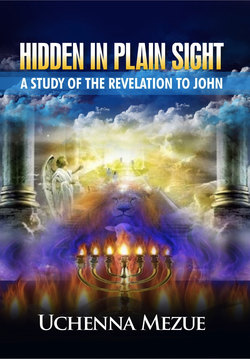Читать книгу Hidden In Plain Sight: A Study of the Revelation to John - Uchenna Mezue - Страница 6
На сайте Литреса книга снята с продажи.
Date
ОглавлениеThe date of The Revelation has also been a matter for debate fueled again by the biases of the different schools of thought. Futurists and historicists favor a late date after 70 AD while preterists argue for an earlier date.
The date of The Revelation is probably another debate that will never be resolved and which really is incidental to the message of revelation. Once the study of The Revelation moves away from the scholarly to the spiritual, the date becomes less important and the author more recognizable. The Revelation will then become one of the most important books of the New Testament for the end times.
The limited discussion below on the date of The Revelation is only for those who are interested in a scholarly survey.
External evidence from the early traditions of the church popularly put the date at about 95AD in the reign of Emperor Domitian (81-96AD) and this is the position of most historicists and futurists. This is largely based on statements from early church Fathers, particularly Irenaeus (120-200 AD). In his discussion on the number of the Antichrist, Irenaeus makes reference to the date of the revelation:
if it were necessary that his name should be distinctly revealed in this present time, it would have been announced by him who beheld the apocalyptic vision. For that was seen no very long time since, but almost in our day, towards the end of Domitian’s reign (Irenaeus 120-200).
Other documents from early Church tradition also tell us that John was banished to the Island of Patmos in the reign of Domitian (Ignatius). Some commentators believe that Babylon as used in the revelation is symbolic of Rome and that therefore the revelation must have been written after 70 AD since Rome had destroyed Jerusalem at this time. They regard this as internal evidence for a late date after 70 AD.
Preterists however argue for an earlier date, about 64 AD (Gentry, 1989), which will fit more with their contention that the events of the revelation represent occurrences in the very beginning of Christianity. The external evidence for an early date held by the Preterist is based on a quote attributed to Papias that John the Apostle was martyred before the destruction of Jerusalem in 70 AD and on Cerinthus, a first century AD author who wrote The Pseudo-Apocalypse. Cerinthus was believed to have died before 95AD, but his Pseudo-Apocalypse contains references to John's Apocalypse.
The internal evidence often cited for the date of the revelation refers to Rev.11, where John is told to measure the Temple (which was destroyed in 70AD). This assumes a literal interpretation, but the context may not be referring to the physical temple in Jerusalem as will be discussed later.
Both the preterists and the futurists buttress their arguments with a quote from Clement of Alexandria.
… Hear a story that is no mere story, but a true account of John the apostle that has been handed down and preserved in memory. When after the death of the tyrant he removed from the island of Patmos to Ephesus, he used to journey by request to the neighbouring districts of the Gentiles, in some places to appoint bishops, in others to regulate whole churches, in others to set among the clergy some one man, it may be, of those indicated by the Spirit (Clement of Alexandria).
This states that John left the island of Patmos for Ephesus after the death of the tyrant. The Preterist regard the tyrant mentioned as Nero (54-68AD), while the Futurists insist that the tyrant named is Domitian (81-96AD). The futurists further support their position from Eusebius (300-340AD) reference to Irenaeus’ work against heresies (referred to above) and his position that Clement was indeed referring to Domitian’s reign (Eusebius).
